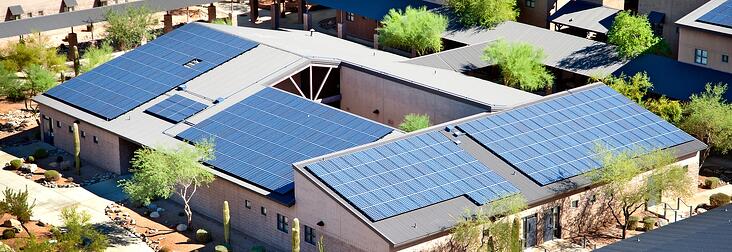This is a guest post by Scott Hennessey, Vice President of Policy & Electricity Markets and Regulatory Counsel for SolarCity.

In late March, California Independent System Operator (CAISO) approved its 2015-2016 Transmission Plan, which included gratifying news for consumers as well as distributed generation and energy efficiency providers. Thanks to consumer investments in rooftop solar and energy efficiency, CAISO cancelled 12 transmission projects in Pacific Gas & Electric territory, saving all ratepayers $192 million. In this way, CAISO has validated what many of us have known for years: When private homeowners and companies invest their own money in rooftop solar and energy efficiency, it results in all ratepayers not having to pay for new expensive generation and transmission projects.
Anyone who cares about making energy cleaner, cheaper, and safer should celebrate this story. By averting the need for utilities to build more infrastructure and pass along the cost to ratepayers, private investment in local clean energy and energy efficiency benefits everyone. Everyone who supports or sells distributed generation or energy efficiency resources needs to share this story – and move it to the center of our policy and regulatory discussions.
What happened on California’s grid didn’t happen in a vacuum – California’s forward-thinking energy policies made it happen. When given the opportunity, Americans will choose the energy future they want – and that future will be more efficient and distributed. Most importantly, their decisions don’t only benefit those who go solar or invest in energy efficiency – they make their neighbors and the wider community better off.
Rooftop solar and energy efficiency contribute significantly to making our power grid cleaner, more reliable and less expensive. These projects defer or avoid the need for new overbuilt generation facilities and disruptive - and often unpopular - transmission lines. Such projects help smooth consumer loads and generate power where it is needed, helping to avoid line losses (i.e., wasted energy that is shed as electricity is moved hundreds of miles over transmission and distribution wires). The need for both generation and transmission & distribution capacity is reduced.
The many other benefits of distributed generation have been more difficult to measure, but still must be considered when regulators debate policies around distributed resources. These benefits include increased resiliency and reliability, grid equipment life extension, fuel market price suppression, health benefits of cleaner air and water, and environmental compliance including reducing carbon dioxide and other air pollutants.
Studies conducted by government agencies, state regulators, and academics overwhelmingly show that these consumer-driven initiatives benefit all ratepayers, whether they use distributed generation or not. We need to come together as an industry with utilities to find solutions that allow for the continued growth of rooftop solar and energy efficiency for the benefit of the entire grid and all ratepayers. Rational compromise can be achieved, and recent activity in New York, California, and Vermont, are crucial examples of a shifting paradigm, whereby states are seeking to incorporate distributed resources and energy efficiency technologies into utility planning and allow utility investors to share in the savings.
Another opportunity for collaboration between utilities and distributed resource providers is through implementation of FERC Order 1000, which requires transmission planners to consider distributed resources as an alternative to new transmission lines. Although it has yet to be fully implemented, Order 1000 could potentially allow utilities to avoid building expensive transmission lines through customer adoption of distributed resources – and recover the cost of those resources via transmission access charges, a solution that would create net benefits for consumers, utilities, and the environment.
At SolarCity, we stand for consumer choice and the rapid expansion of clean energy and we are willing to partner with anyone who shares that vision. Critical to these discussions is acknowledging the value of distributed generation and energy efficiency to the grid, incorporating those resources into planning, and designing new rate structures that incentivize the advanced energy industry and the electric utility industry to work together for the betterment of the grid and all consumers.